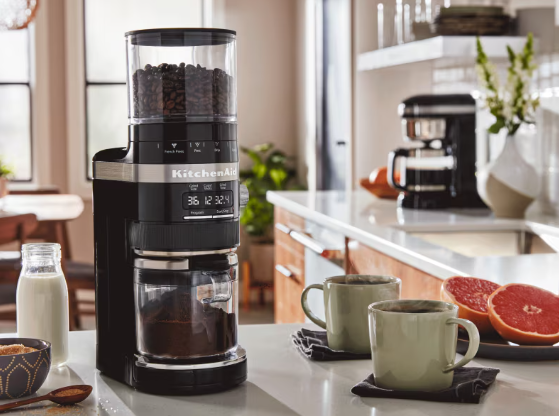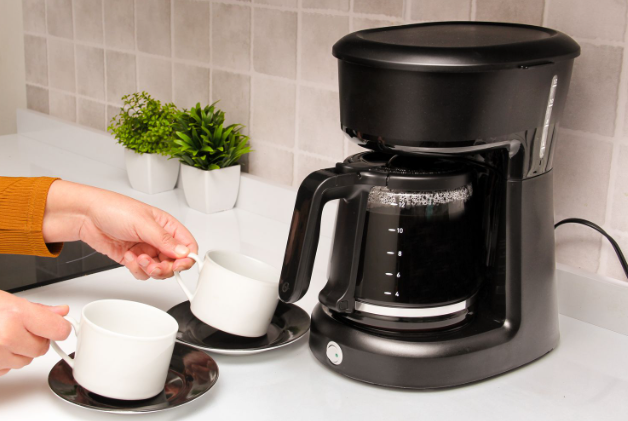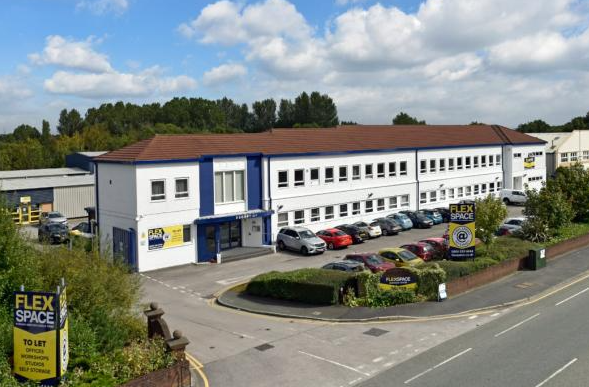An Enthusiast’s Buying Tips And A Full List Of Types And Features
For the coffee lover, having a perfectly blended drink elevates the experience. Whether it is a cappuccino, frappe, or coffee smoothie, the process is made easier with coffee blender machines. The Coffee Blender Machines are not only multifunctional, equipped with the ability to blend, froth, and even mix other ingredients, but they also assist in grinding the coffee. The grinder-blender combination helps make a delicious, barista-level coffee that can be enjoyed at home and in small cafes. With so many choices available, it can be a little overwhelming. With the knowledge of the types and features of coffee machines, along with tips from experts, you will be able to seamlessly navigate through options and make the best selection for you.
The Importance of Coffee Blender Machines
Unlike regular coffee makers, coffee blender machines are more sophisticated. They can perform a variety of functions, allowing the creation of smooth-textured iced coffee, sophisticated lattes, or cappuccinos topped with fluffy whipped cream. They are particularly helpful for
Cafes and Restureants: Blended drinks are a great addition to the me and can spice up the menu whilst delivering great profitability.
Home Baristas: They enable a person to enjoy cafeteria drinks without the need to go out.
Events and Catering: They can prepare one signature drink, and it can be made in bulk and served quickly.
Key Features to Look For
These are some crucial aspects that have a direct impact on the performance and the quality of the drinks to be served by coffee blender machines.
1. Motor Power
Ample motor power aids in the seamless blending of coffee, milk, and ice into a drink without any lumps. For home users, a 500-watt machine will suffice, and 1000-watt machines are necessary for heavy blending in cafes.
2. Jar Capacity
A 32 to 48-ounce jar is ideal for home users. For cafes, a 64-ounce jar will suit a high volume of customers often served in a short period.
3. Motivations for Quality of Blades
The enduring use and blending consistency of a machine depend on the blades made from stainless steel. Some advanced types even branch out blades into several layers, so they can slice through coffee beans and other frozen ingredients with ease.
4. Set and Modify
The blades can also be configured into layers for easier slicing. Also, the coffee and frozen ingredients can be supplied in layers.
5. Machines which Dose
Blender models meant for homes and open cafes with high noise environments have become quieter, featuring dampening covers.
Types of Coffee Blender Machines
1. Basic Coffee Blenders
These are primary models of coffee blenders, and they lack advanced features. Basic coffee blenders will not have any ice or bean-crushing features.
2. Intermediate Coffee Blenders
These are the most popular types. They can have different speeds, blades, and jars of different sizes, and could make slushy drinks. Moreover, they could make shakes and coffee-based products.
3. Advanced Coffee Blenders
These are more advanced as they include some of the Class features. These will have more powerful motors, thereby allowing the user to use the machine for longer without overheating.
4. Combination Coffee Blender and Brewer
These kinds of machines are capable of brewing coffee and blending other ingredients. Thus, they are perfect for people who want to have fast and easy meals.
Best Materials for Coffee Blender Containers
In the comparison between the glass and plastic jars, glass jars win with respect to maintenance and durability, especially when it comes to liquid containers. However, glass widens its cons by being complicated to clean. Further, glass is more delicate.
On the other hand, with glass jars, plastic jars are lightweight. In addition, plastic jars have great durability. On the flip side, plastic jars scratch easily, ruining their appearance over time.
If the focus is on time, a coffee blender jar made from stainless steel will be the best. This is because the glass will keep coffee hot for a long time. However, the downside, in terms of blending, is that the user will not be able to see the blending process, which is a crucial part for many.

Maintenance and Cleaning
Maintenance and different cleaning methods of a coffee blender, which focus on efficiency and minimizing contamination, are grounded in blending, effort, and taste.
Rinse Immediately After Use – The equipment chamber can always be rinsed to save the coffee oil from becoming rancid.
Deep Clean Every 7 Days: Warm water is effective for some appliances, while others can be cleaned with a mild solution of vinegar.
Regularly Check Every Five Days: A simple check for blunt risks and edges that can be harmful for blending is critical for blending to ensure operational efficiency.
Minimize Liquid Level: Use while blending coffee so the coffee router can utilize the excess coffee as primer, while the machine can use the liquid as primer.
Energy Efficiency
Daily use of commercial coffee blender machines is likely to incur a high expenditure. Every commercial coffee blender machine is designed with withenergy-savingg special features.
Price Ranges and Budgeting
The coffee blender machine encompasses the broadest spectrum of prices.
To achieve the optimal budget, the value-for-cost for espresso consumption is projected at $50. From $100, the value proposition is packed with features. For home users, the features of the espresso machine and espresso maker will be fully functional with no limitations.
High-End ($300-$800) – Commercial-grade models have advanced noise cancellation and blending features.
Expert Buying Tips
Match Capacity to Usage – A single service does not justify purchasing a large commercial-grade blender that is meant to handle several hundred ounces.
Consider all features. If you plan to make smoothies or other items with it, like soups and milkshakes, then get a model that has more features.
Test Noise Levels – This is critical for cafes with open kitchens.
Read Customer Reviews – Reviews can provide insight into a product’s durability and reliability, especially when put through everyday use.
Key Manufacturers of Coffee Blender Machines
Some trusted names in the market include:
Vitamix – Known for professional-grade durability.
Blendtec – Powerful motors and advanced blade design.
Ninja – Affordable with good performance for home users.
Hamilton Beach – Reliable entry-level models for small businesses.
Table of Contents
Final Verdict
A coffee blender machine that fits best is the one that is tailored to your specifications, is within your budget, and serves your intended purpose. A home user would benefit from a mid-range unit that is equipped with variable speed settings and a durable jar. A cafe would need a commercial-grade machine with high-capacity blending, and the investment is justified.
Taking into account the combination of the motor strength, the quality of the blades, as well as the capacity guarantees, every coffee creation is sure to be smooth, flavorful, and delightful with every single sip.
Enhance your coffee creations into bewitching, barista-style masterpieces with the proper Coffee Blender Machine. It is now so easy to prepare an iced mocha during the hot afternoons and a pumpkin spice latte during fall. As with any other high-quality device, a Coffee Blender Machine eases its operator’s work, providing accuracy and refining the taste, aroma, and savor of every brew.



